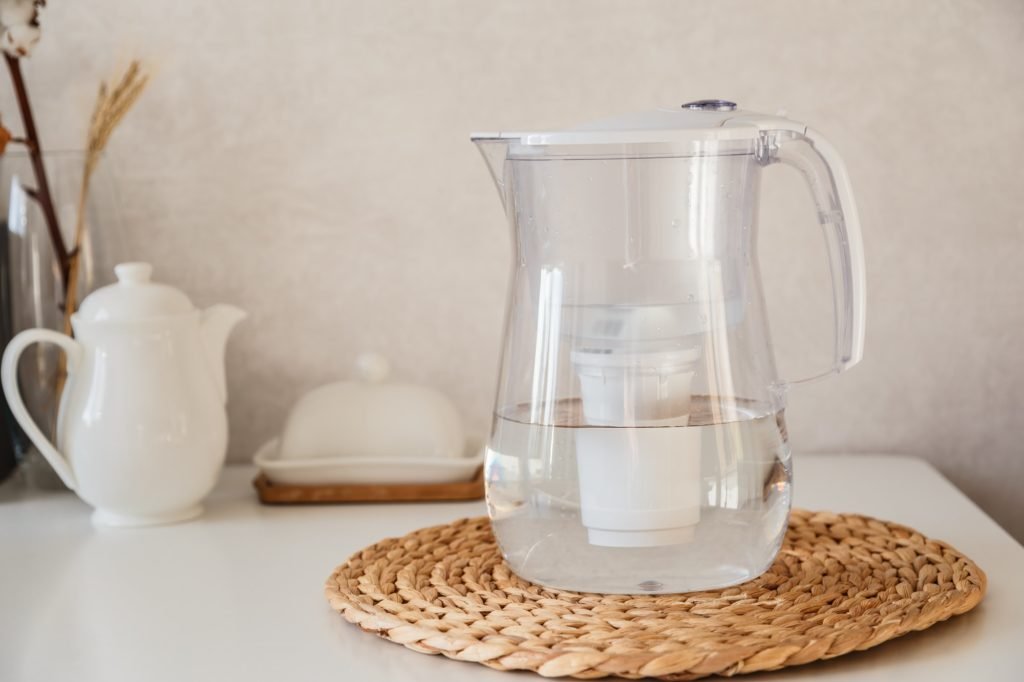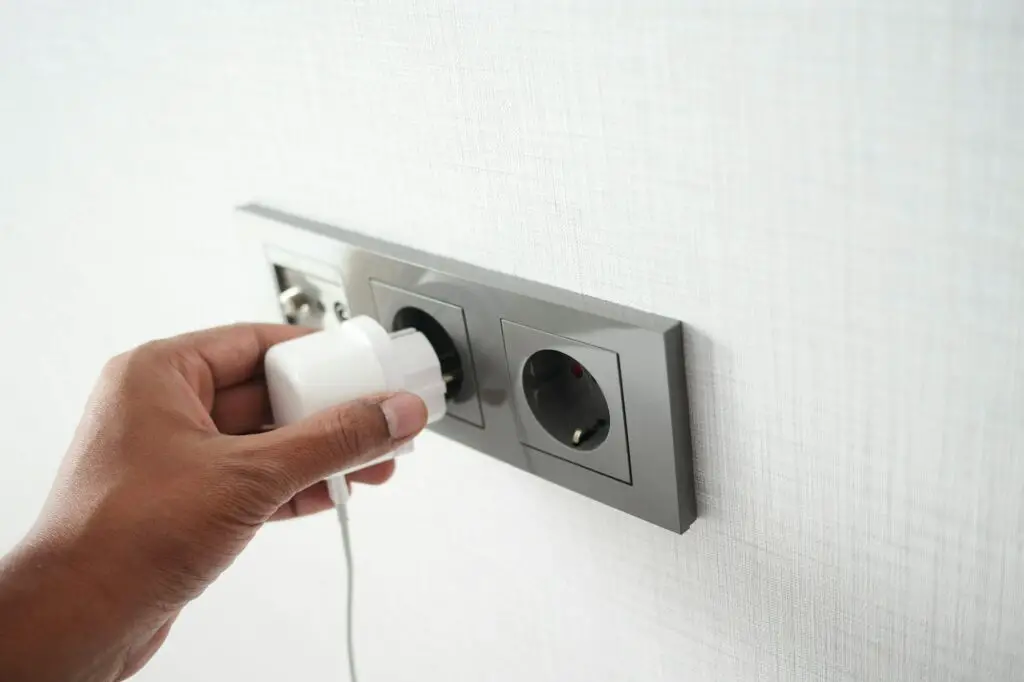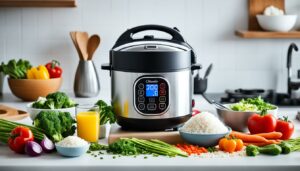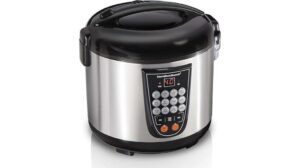Let’s face it, most good rice cookers, such as the Zojirushi models, are not cheap. So, it makes sense that you want to keep them in tip-top working order and get as much use out of them as you can. Many people overlook the importance of proper maintenance, but if you want your rice cooker to keep serving up delicious, perfectly cooked grains, you’ve got to take care of it.
So, today I’m asking you to read my essential guide to ’12 Essential Steps for Prolonging Your Rice Cooker’s Life’ and discover simple yet effective ways to increase the longevity of your hardworking kitchen companion.
Let’s keep your cooker cooking for years to come!
Table of Contents
Understanding Your Rice Cooker
To get the most out of your rice cooker, you’ve got to first understand how it works. It’s not just a metal box with a lid. Inside, there’s a heating element that boils water to produce steam. This steam then rises, cooking your grains thoroughly and evenly. All this happens when you plug it in and set the timer, but there’s more than meets the eye.
Your rice cooker’s efficiency relies on the heat and pressure it builds up. The machine’s water tank and steam basket play crucial roles too. The water tank needs to be filled correctly – not too little, not too much – for optimal steam production. The steam basket, on the other hand, should be carefully loaded to allow steam to circulate freely among the grains.
The machine’s timer and settings give you control over the cooking process. You’ve got the power to adjust according to the grain type and your desired result. Don’t forget to clean your steamer regularly. This prevents limescale build-up, which can hamper its performance. Understanding these components and their functions can help you optimize your rice cooker’s lifespan and efficiency.
Regular Cleaning Routine
After each use, it’s crucial that you clean your rice cooker to prevent any residue or limescale from building up. Regular cleaning not only ensures the longevity of your appliance but also maintains the quality of the grains being steamed.
Here’s a simple routine to follow:
- Start by unplugging your rice cooker and letting it cool down. Safety first, always!
- Empty the steamer and dispose of any leftover grains.
Next, focus on the main components: the cooking pot and the steaming tray:
- Cooking pot:
- Rinse it under warm water.
- Gently scrub the surface with a mild dish soap and a non-abrasive sponge.
- Rinse it again to ensure no soap remains.
- Steaming tray:
- Soak it in warm soapy water for a few minutes to loosen any stuck grains.
- Scrub it gently with a sponge and rinse.
Lastly, wipe the exterior with a damp cloth, dry all components thoroughly before reassembling and storing. Remember, moisture is the enemy of any electrical appliance.
Safe Storage Practices
In safely storing your rice cooker, it’s crucial that you find a dry, cool place where it won’t be exposed to any potential damage. Humidity, heat, and accidental knocks can shorten its lifespan significantly. So, make sure it’s tucked away in a location where it’s safe from these threats.
After use, don’t just shove it in a cupboard right away. Instead, allow it to cool down naturally before storing it. Rapid temperature changes can stress the materials and lead to cracks over time. It’s also wise to wrap it in a soft cloth to protect the exterior from scratches or dents.
If you’re not using it for a long period of time, don’t leave water in the tank. Stagnant water can lead to bacteria growth, damage the internal components, or cause unpleasant smells. Make sure you empty it out and allow it to dry fully before storing it.
Furthermore, always ensure you’re storing it in an upright position. This helps maintain the integrity of the internal parts and prevents damage from any residual water inside.
Importance of De-scaling
Just as you’ve learned about the importance of proper storage, so too must you understand the crucial role de-scaling plays in extending your rice cooker’s lifespan. It’s not just a recommendation—it’s a necessity. The process eliminates mineral deposits that build up and interfere with the steamer’s performance.
Imagine this:
- Your rice cooker is like a well-oiled machine. However, over time, mineral deposits accumulate, much like:
- Rust on a car, impairing its overall functionality.
- Plaque in arteries, disrupting the flow.
These analogies help illustrate the significance of de-scaling. The mineral buildup can:
- Decrease the steamer’s heating efficiency
- Lead to inconsistent cooking
- Eventually cause breakdowns
Regular de-scaling is akin to giving your steamer a new lease on life, enhancing its performance and durability. It’s a simple task that requires water and a de-scaling solution, but it’s a game-changer.
Proper Handling and Usage
Next on your agenda should be understanding the importance of proper handling and usage of your rice cooker, because, like regular de-scaling, it’s a crucial factor in prolonging its life. You’ve got to treat it right to get the most out of it.
Always read the manufacturer’s instructions that come with your steamer. Each model is unique and might’ve specific requirements. Don’t assume all steamers are the same. Misuse can lead to damage, reducing the appliance’s lifespan.
Never overfill your rice cooker. It may seem like a good idea to steam a large batch, but overfilling can cause pressure buildup and possible malfunction. Always stick to the recommended grain and water ratios.
After each use, clean your steamer thoroughly. Grains can leave behind residue that builds up over time and hampers the appliance’s efficiency. A quick rinse won’t cut it; you need to scrub it down to keep it in top shape.
Lastly, store your steamer properly when not in use. Keep it in a dry, clean place to avoid moisture build-up, which can lead to rusting. With these tips in mind, you’re well on your way to maintaining your rice cooker for years to come.
Using the Right Water

Continuing with your rice cooker’s care, choosing the right water plays an equally vital role in extending its life. The type of water you use can significantly affect the longevity and performance of your grain steamer.
Now, you’re probably wondering, ‘How does the water type matter?’ Well, it’s all about the mineral content. To illustrate:
- Tap water
- Typically contains minerals and impurities that can build up in your rice cooker over time, leading to decreased performance and eventual breakdown.
- Distilled water
- As it’s free from minerals and other impurities, it’s the best choice for your rice cooker. It prevents mineral buildup, ensuring your appliance runs smoothly for longer.
Switching to distilled water might seem like a small change, but it’s one that’ll make a major difference in the long run. So, don’t underestimate the power of using the right water. It’s a simple, cost-effective way to prolong your rice cooker’s life.
Periodic Inspection for Damage
In caring for your rice cooker, it’s crucial to conduct periodic inspections for any signs of damage. This isn’t just about maintaining the efficiency of the machine, but it’s also about extending its lifespan.
It’s an easy mistake to run your rice cooker continuously, without checking for potential issues. Don’t overlook any components. Inspect the steamer’s hoses, valves, and seals. Look for cracks, leaks or wear and tear. Any of these could lead to bigger problems if left unattended. It’s always better to replace these parts early, rather than waiting for a complete breakdown.
Remember to check the interior of the steamer too. Residue build-up can affect the machine’s efficiency. If you spot any, clean it out immediately.
Keep an eye on the heating element. If it’s not working properly, it could overheat and damage other parts of the steamer. Don’t ignore any changes in the machine’s performance. If it’s taking longer to steam or the grains aren’t cooking evenly, it could indicate an issue.
Timely Replacement of Parts
Following regular inspections, replacing worn or damaged parts in your rice cooker is another key step in ensuring its longevity. A well-maintained machine not only performs better but also lasts longer, saving you time and money in the long run.
There are two crucial areas where timely replacement of parts can make a significant difference:
- Mechanical Parts
High-wear items such as bearings, belts, and gears should be replaced as soon as signs of wear become apparent. Don’t wait for a complete breakdown; it’s cheaper to replace a worn part than to repair a broken machine.
- Electrical Components
Keep an eye on control panels, switches, and wiring. If you notice any signs of damage, replace these components immediately to prevent more severe issues down the line.
Remember, every component of your rice cooker has a lifespan. It’s important to understand these lifespans and plan replacements accordingly. You wouldn’t drive your car without changing its oil, would you? The same principle applies to your rice cooker.
Regular part replacements are a small investment that can extend your machine’s life significantly. So don’t neglect this crucial aspect of machine maintenance.
Avoiding Overfilling
You’re doing your rice cooker no favors if you’re consistently overfilling it. Sure, it might seem like a good idea to cram as much grain as possible into the steamer to save time. However, this practice can actually lead to decreased appliance longevity. Overfilling places undue stress on the steamer’s components, potentially causing damage over time.
Each rice cooker has a maximum capacity for a reason. Respecting this limit is essential if you want your appliance to last. When you overfill the steamer, you’re not allowing enough space for the steam to circulate properly. This can result in unevenly cooked grains, not to mention the additional pressure exerted on the appliance.
Avoiding overfilling isn’t just about preserving the life of your grain steamer. It’s also about achieving the best results with your cooking. Overfilled steamers can lead to soggy or undercooked grains, ruining your meal. So, for the sake of your appliance and your culinary efforts, it’s best to avoid the temptation to overfill.
Proper Lid Maintenance
Just as important as avoiding overfilling is taking care of your rice cooker’s lid, as improper maintenance can lead to serious damage. You mightn’t think it, but the lid is a vital part of your steamer’s functionality. It’s the shield that keeps the grain and steam contained and, if not properly cared for, it can compromise the longevity and effectiveness of your appliance.
Proper lid maintenance includes:
- Regular Cleaning:
- After each use, give the lid a good wipe down. Don’t let residue build up; it can cause rust or corrosion.
- Use a soft, damp cloth for cleaning. Avoid abrasive sponges that can scratch the lid.
- Periodic Inspection:
- Check the lid for cracks or damage regularly. Even minor flaws can lead to steam leakage or worse, complete malfunction.
- Inspect the seal. If it’s worn or damaged, it needs to be replaced immediately. A faulty seal can let out steam, reducing the efficiency of your rice cooker.
Keeping your lid in top shape isn’t hard, but it’s crucial. By following these simple steps, you’ll ensure your rice cooker works efficiently for years to come. After all, a well-maintained lid equals a happy, long-lasting steamer.
Handling the Power Cord Correctly

Handling your rice cooker’s power cord correctly is a must-do to ensure its longevity and safety. Don’t underestimate the importance of this step; it’s just as crucial as any other maintenance task.
The first rule you should follow is to never yank the cord from the power outlet. Always grip the plug firmly and pull it out smoothly to prevent damage. It’s easy to get into the habit of just tugging on the cord, but over time, it can lead to fraying or internal wiring issues.
Secondly, avoid bending the cord at sharp angles or wrapping it too tightly around the appliance when not in use. This can cause the wires inside to break or fray, leading to electrical short circuits or even fire hazards.
Lastly, keep the cord away from heat sources and water. Exposure to excessive heat can damage the insulation, while water can cause a short circuit or electrocution.
Regular Professional Servicing
To ensure your rice cooker’s optimal performance, it’s crucial to schedule regular professional servicing. Don’t underestimate the importance of this step in prolonging your machine’s life. Professionals have the knowledge and expertise to identify potential issues before they become serious problems.
Think of it this way:
- Regular servicing is like a health check-up for your rice cooker.
- Technicians can spot early signs of wear and tear.
- They can provide necessary adjustments to improve efficiency.
- It’s an investment in your rice cooker’s longevity.
- You’ll avoid costly repairs in the future.
- Your machine will perform at its best for an extended period.
Remember, you’re not just prolonging your equipment’s life, but you’re also ensuring its continuous high-quality performance. Ignoring regular check-ups can lead to machine breakdowns that could disrupt your operations and negatively impact your profits. So, make a habit of scheduling regular professional servicing.
It’ll save you from a lot of headaches down the road, and you’ll be thanking yourself for taking this proactive approach in maintaining your rice cooker’s health.










